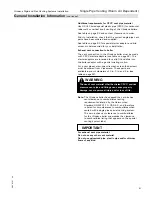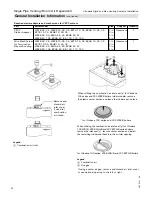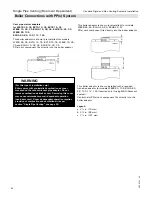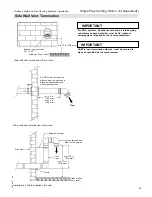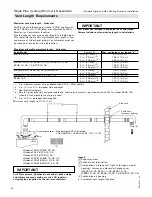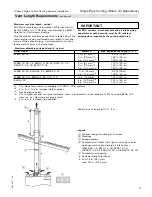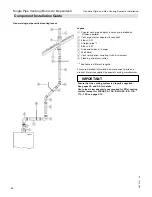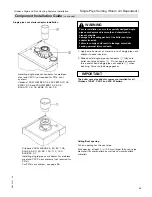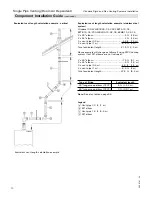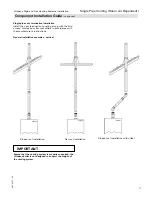
74
5608 741 - 04
Vitodens Rigid and Flex Venting Systems Installation
General Flex Venting Installation
Exhaust vent installation steps
The flexible pipes, rigid pipes and components are made
from polypropylene material with excellent resistance
to flue gas condensate formed in the exhaust vent of
a gas-fired condensing heating boiler.
Every venting system must be properly planned and
installed for optimum performance and safety. A flexible
pipe installation always begins with an inspection of the
existing masonry chimney (if being installed in a chimney
as a liner). Inspect the masonry chimney for proper
construction and compliance with applicable building codes.
A thorough cleaning of the chimney should be done prior
to the installation of the chimney liner to ensure that it is
free and clear of obstructions. Should an inspection reveal
that an existing chimney is not safe for the intended
application, it must be repaired or rebuilt to conform to
NFPA 211 or any other applicable standards.
Make sure you have available manpower in order to
handle the flexible pipe.
Determine the proposed location of the opening in the
existing chimney. The slope of the connecting rigid flue
pipe should be a minimum of 3º [equivalent to 2 in. per
3.3 ft. (50 mm per 1 m)].
The length of the flexible vent system can be determined
two ways: use a plumb line to measure the existing
chimney length (add an extra 16 in. (40 cm) for each
bend). The flexible vent system can be shortened by
cutting with a saw or scissors within a groove. The
correct length can also be determined after installing
it in the existing chimney by cutting the flex pipe at
the top of the chimney.
Two lengths of the flexible vent system can be
connected to each other with a flex pipe coupling
(if required). See manufacturer’s catalogue.
Mount the spacer cross with a maximum distance of
6
b
ft. (2 m) apart or as specified by the manufacturer.
Some installations may require the use of a rope
connected to a pulling cone or directly to the bottom
connector.
With the adaptor and spacers connected, start installing
the flex pipe from the top of the chimney and carefully
feed the liner down through the middle. To prevent
damage to the flex pipe additional manpower may be
required to guide the flex pipe with a rope from the
bottom of the chimney.
WARNING
Ensure that the entire venting system is protected from
physical damages. A damaged venting system may
cause unsafe conditions.
WARNING
The venting system is approved for indoor installations
only. Do not install the venting system outdoors.
General Information


